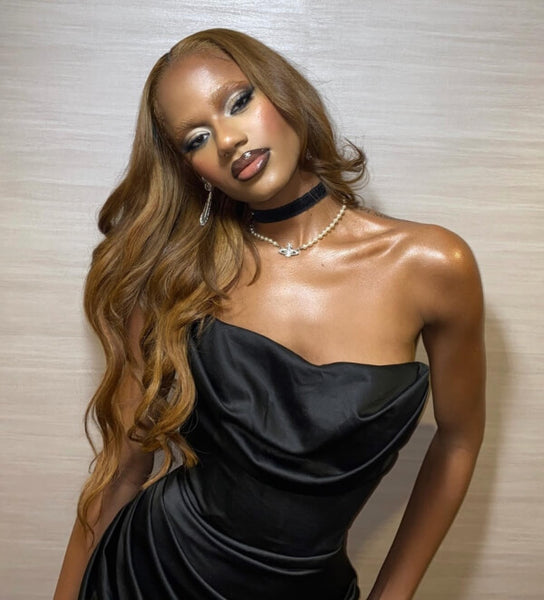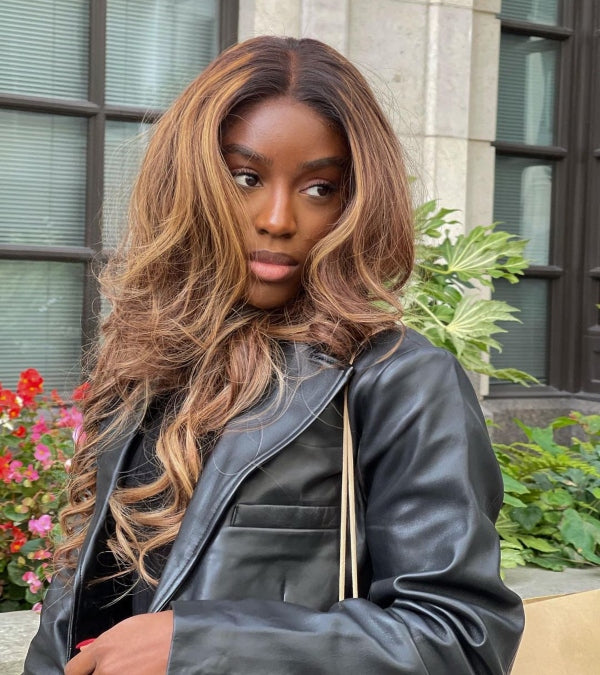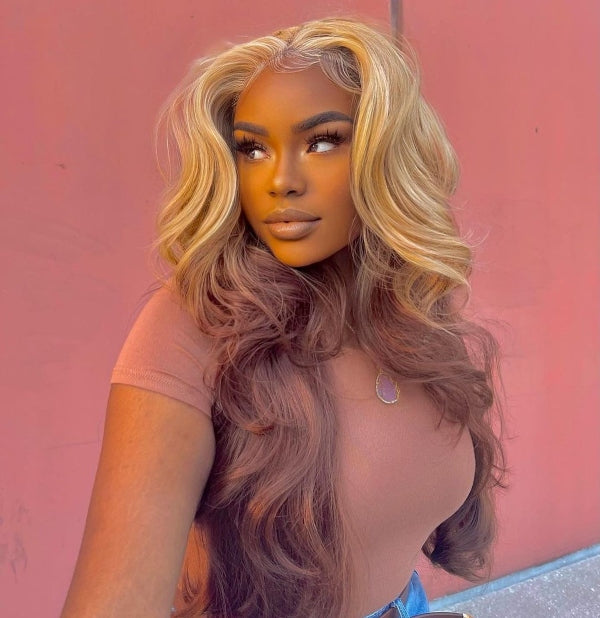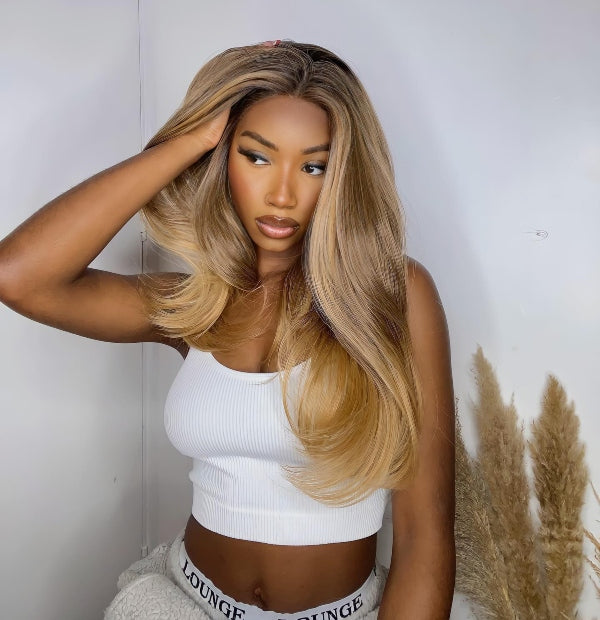Are you being pulled in two different directions when it comes to your hair? Both ombre and balayage are beautiful hair trends that people everywhere are loving, and that's why it's so hard to choose between the two. It also doesn't help that it can be difficult to pinpoint the subtle differences between them. To help you make a decision, we've put together a comprehensive guide on balayage vs. ombre. In this post, we’ll discuss the key differences you should know about so you can make the best decision for your hair.
What is Balayage?

Balayage is a French word that means “to sweep.” This technique is all about painting color onto the hair using a sweeping motion. The technique is done without using any foil.
The result is a natural-looking gradient of color that can be achieved with any hair dye shade, from blonde to black. Balayage is a great option for those who want to add some dimension to their hair without making a huge commitment to new hair color.
What is Ombre?

Ombre comes from the French word “ombrer,” which refers to a hair color with shaded or tonal variations. In accordance with its name, ombre hair is usually darker at the roots and gradually gets lighter towards the ends.
This hair color technique can be achieved with any hair color, but it is most commonly seen with blonde or brown hair. Ombre is ideal for those who want to add an edge to their look without going for a full-on color change. And the best part is that the look can be as subtle or as dramatic as you want it to be.
Reverse Ombre

If you’re looking for a hair color trend that is the complete opposite of ombre, then reverse ombre is the way to go. This hair color technique is achieved by coloring the ends and mid-lengths of the hair darker than the roots, or the roots lighter than the mid-lengths and ends. The result is hair that is darker at the ends than it is at the roots. This look is a bit quirky and fun, worn only by those who have an attitude to match.
Have you experienced hot roots before? Hot roots refer to a hair color mistake where your roots come out lighter than the rest of your hair. It happens when the heat from your scalp causes the dye or bleach on the roots to process way faster than the rest of the hair does. The reverse ombre looks a little bit like this, but it's done on purpose.
Sombre

Sombre is the soft and subtle version of ombre. It involves creating a very natural-looking gradient that isn't nearly as harsh looking as traditional ombre. The difference is all in the color choice - in typical ombre, the color at the mid-lengths and ends of the hair is usually very light, whereas sombre utilizes hues that are only a couple of shades lighter than the root color.
The Differences Between Balayage and Ombre
Differentiating between balayage and ombre can be incredibly difficult for those who are unfamiliar with the terms. In this section, we'll illuminate the key differences between balayage and ombre so that you can choose the right hair coloring technique for you:
Application: Balayage is applied using a technique that focuses intently on very subtle gradients - with the color becoming more and more saturated as you get to the ends. With ombre, the dye is applied horizontally at the mid-lengths and then blended upwards a bit to blur the line of demarcation between the dark color and the light color. The result is much less gradual than balayage.
Color Placement: Ombre results in darker roots and lighter tips every time, while balayage color placement is a lot more varied and depends on the expertise of the stylist and the needs of the client. For instance, balayage might be lighter at the roots in some areas - especially around the face.
Natural vs. Artificial: Ombre can sometimes look artificial or harsh, while balayage gives you a much more subtle, wearable, sun-kissed look.
Longevity: Ombre dye jobs last anywhere from 4 to 8 weeks, while balayage lasts around 4 months.
Upfront Cost: Ombre is much more affordable than balayage; a balayage dye job could set you back anywhere from $150 to $400, while ombre will only cost you about $80 to $200. The exact price you'll pay will depend on your location, the length of your hair, and the complexity of the coloring job.
Brass: Balayage hair is more likely to turn brassy than other hair colors, so you'll need to use purple shampoo and conditioner to keep it from turning yellow or orange. Ombre hair is not as susceptible to brassiness.
Meaning: The term balayage refers to a hair color application technique, whereas ombre refers to a color effect.
Foil requirement: Ombre often requires foils, and balayage does not.
Are you making a choice between balayage and highlights? Read this guide to make a better decision
Similarities Between Balayage and Ombre
1. As you can see, there are many differences between balayage and ombre. But what about the similarities? In this section, we'll go over a few of them:
2. Both balayage and ombre look great on most hair types, though both look best on longer, loosely textured, or straight hair.
3. They are both achieved by lightening the hair.
4. Both balayage and ombre will require periodic touchups to keep the look from going brassy or dull.
5. Both balayage and ombre create a gradual lightning effect for the most part.
6. Any time you lighten your hair, there's potential for chemical damage. For that reason, both balayage and ombre can damage your hair.
How to Choose Between Balayage and Ombre
Choosing between balayage and ombre is easy once you know what questions to ask yourself. We'll cover those below.
Your Budget: How much are you willing and able to spend on your initial hair transformation? A full balayage dye job costs at least twice as much as an ombre.
Maintenance Price: How much money are you willing to spend on hair maintenance? If your budget is small and you don't plan on getting many touchups to keep your new hair color vibrant, ombre is a more affordable option. But if you want frequent touchups, balayage might be the most affordable, since it lasts longer and only requires about 3 touchups per year. Do your own research and ask your stylist what they would recommend for you and your budget.
Maintenance Time: How much time do you have to commit to hair maintenance? If you don't have a lot of time to commit to hair maintenance, ombre may be your best bet. Balayage tends to go brassy quicker, so you may need to take some steps at home to keep that from happening. Color-depositing purple shampoo and conditioner can do wonders in this regard.
Your Preference: Do you want a more natural look or a more dramatic one? If you're going for a natural look, balayage will give just that. If you want something that has more of a look-at-me vibe, ombre may be more your speed.
Can You Get Both Balayage and Ombre?

You can definitely get both balayage and ombre in the same sitting - and many women do. This is a great way to get the best of both worlds: the subtle, sun-kissed effect of balayage near the roots with the striking ombre gradient throughout the mid-lengths and ends. It's a look that is sure to turn heads.
If you're considering getting both balayage and ombre, be sure to consult with a professional hair colorist who has experience with using both techniques simultaneously. They'll be more capable of helping you achieve the look you want than someone who hasn't gotten that experience.
Shop Lwigs for Your Best Balayage/Ombre Look
If you want to skip out on hair damage and salon touchups and achieve a beautiful balayage or ombre look at home, Lwigs has you covered. We offer a variety of gorgeous wigs in both balayage and ombre styles so you can find the perfect one to suit your needs. Plus, our wigs are made with high-quality human hair, so they look and feel 100% natural. We encourage you to browse our extensive selection of balayage and ombre wigs today!













